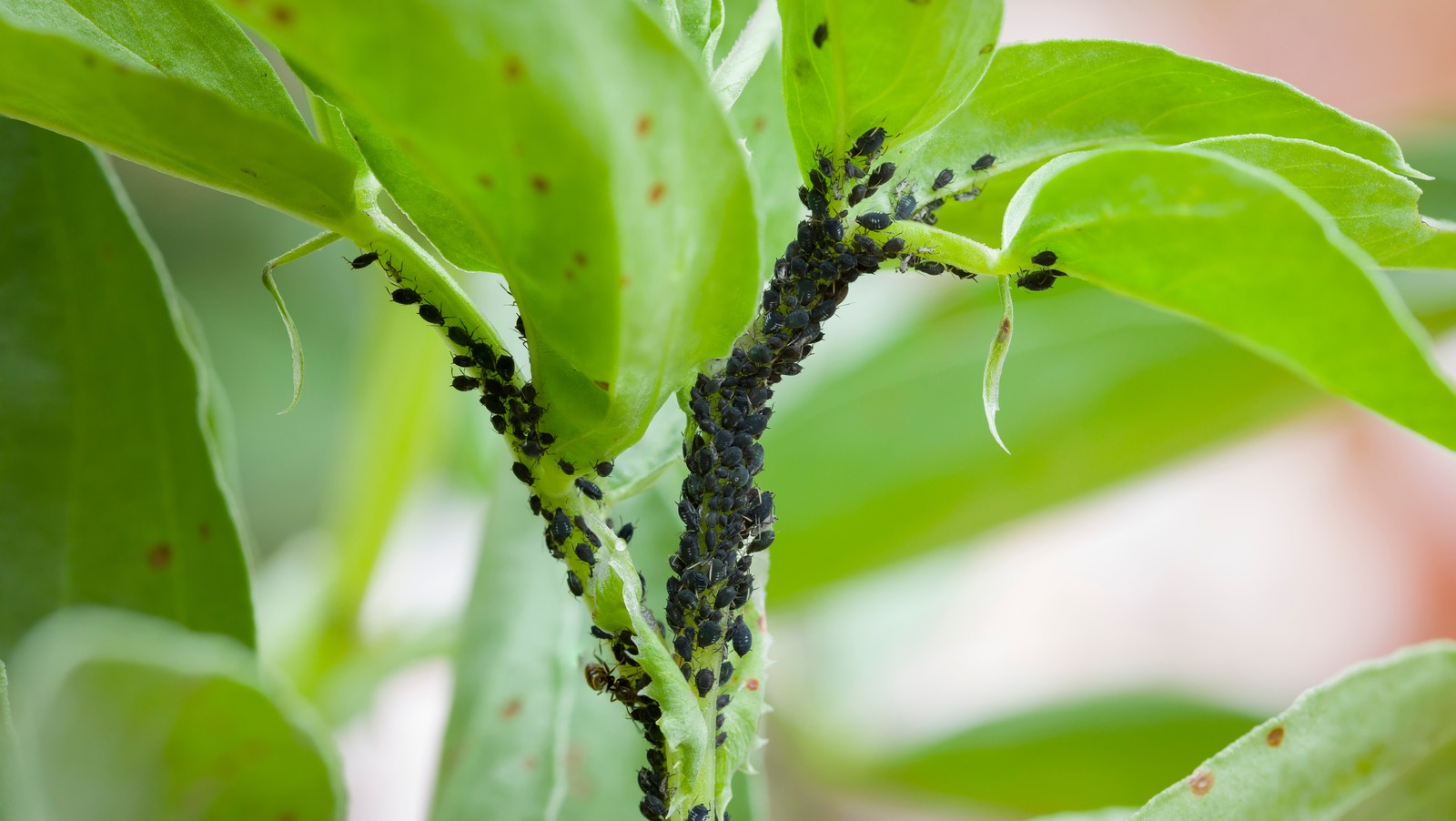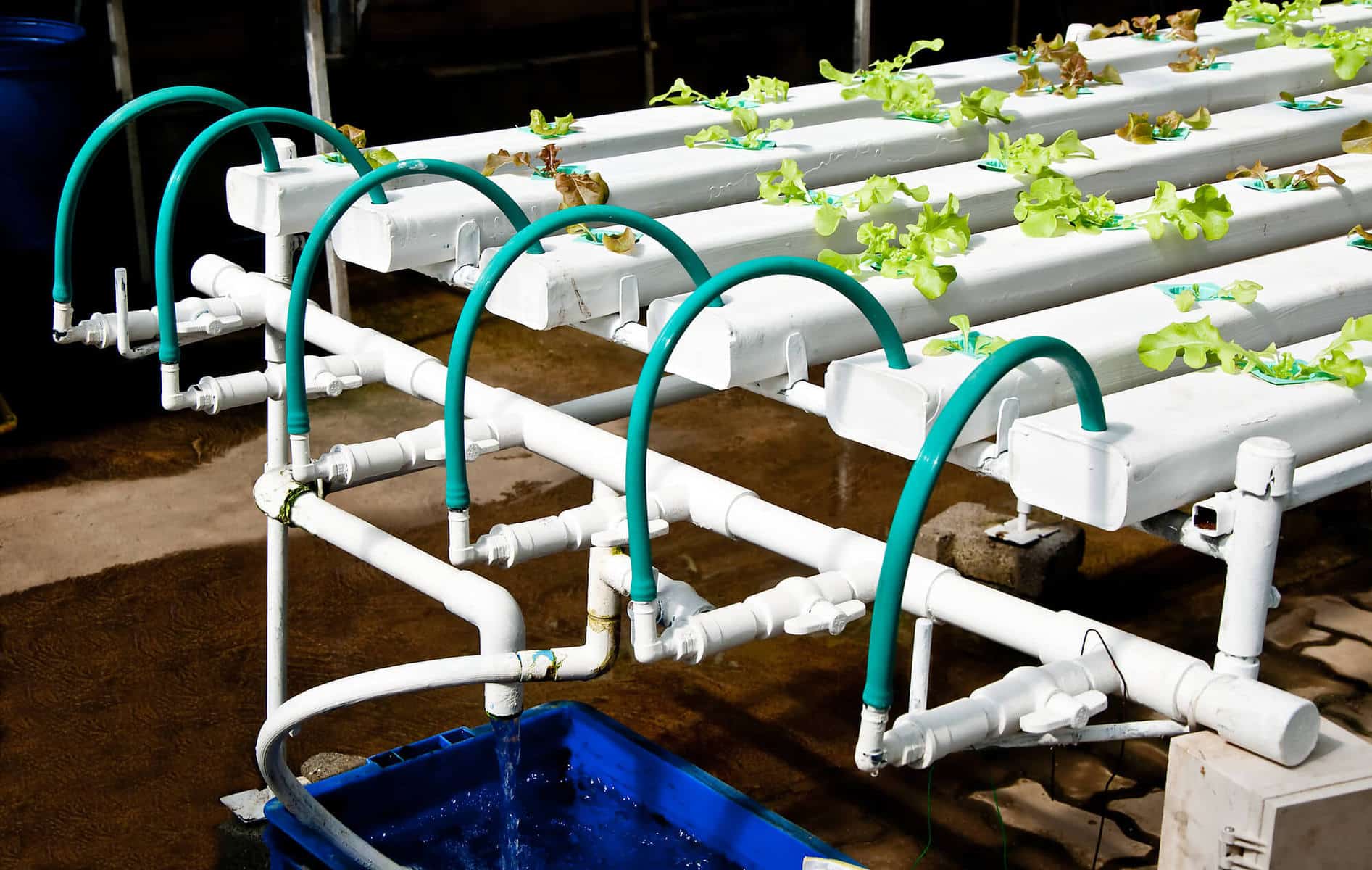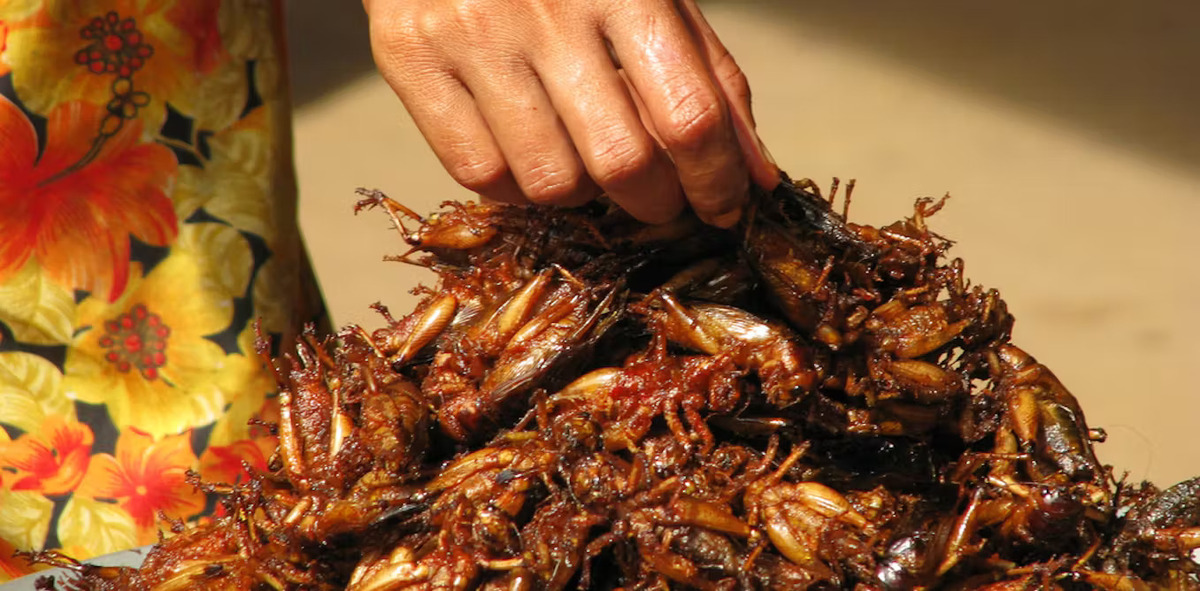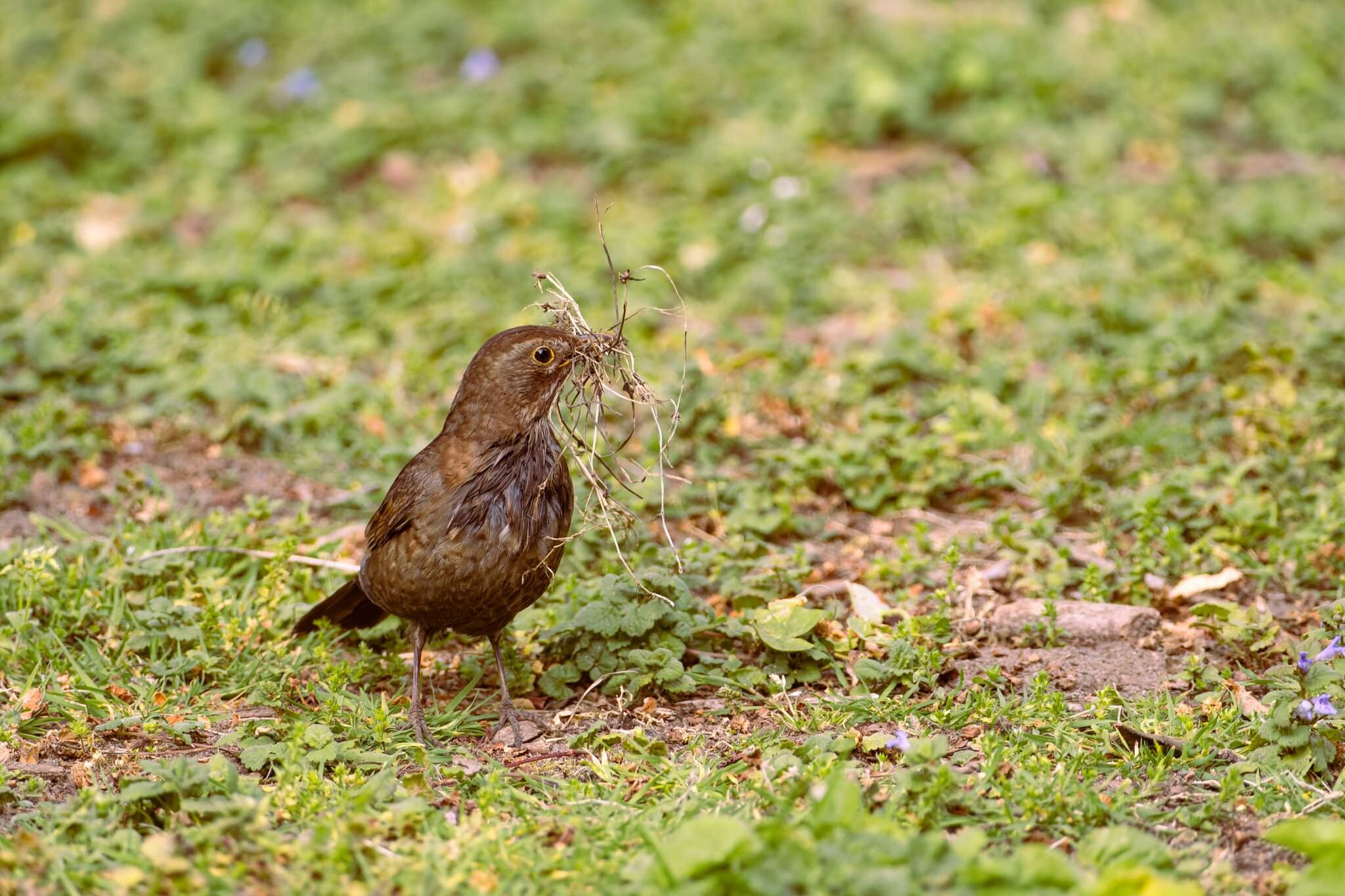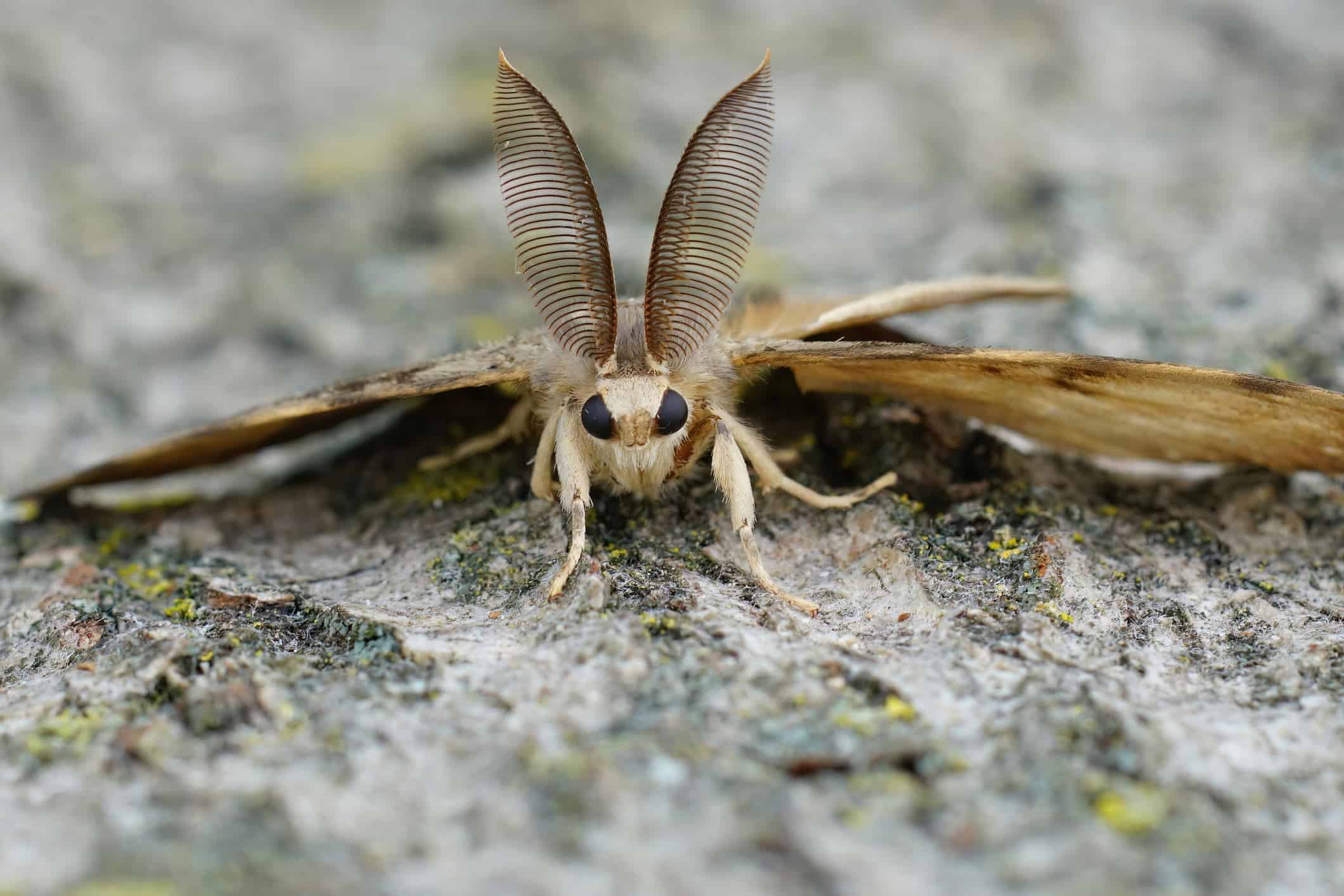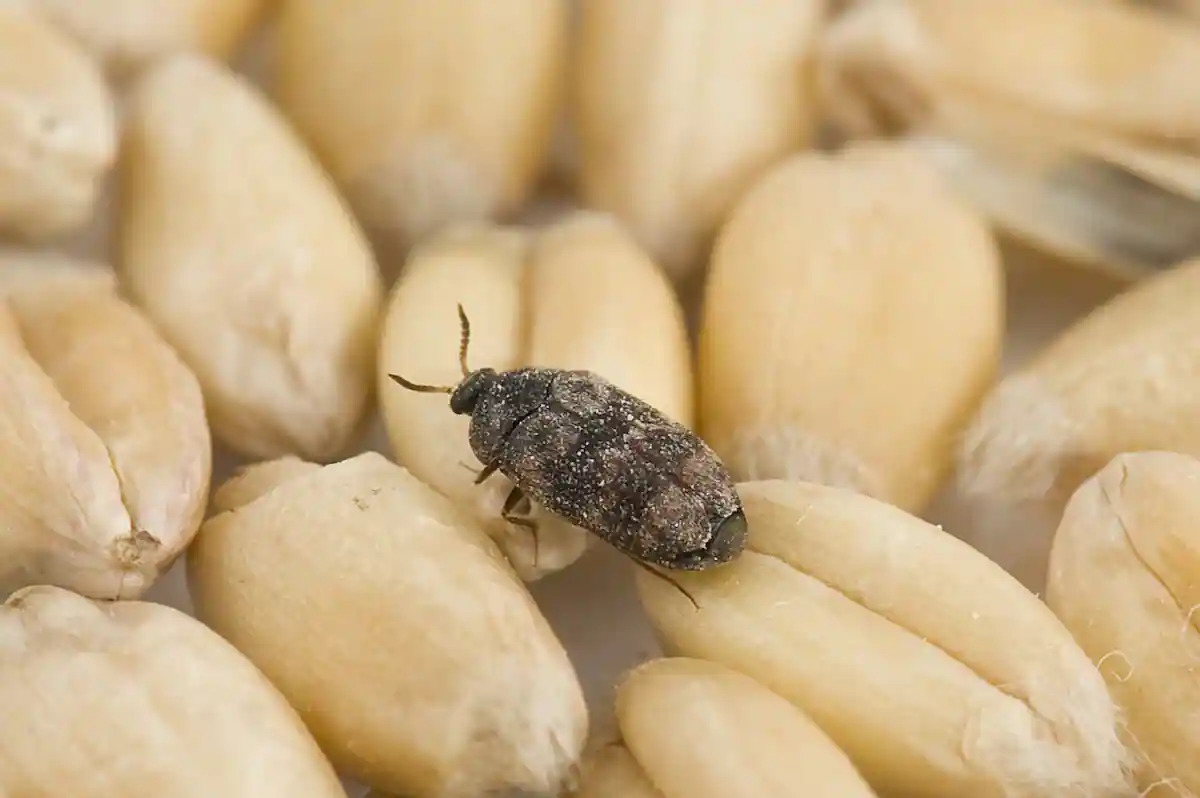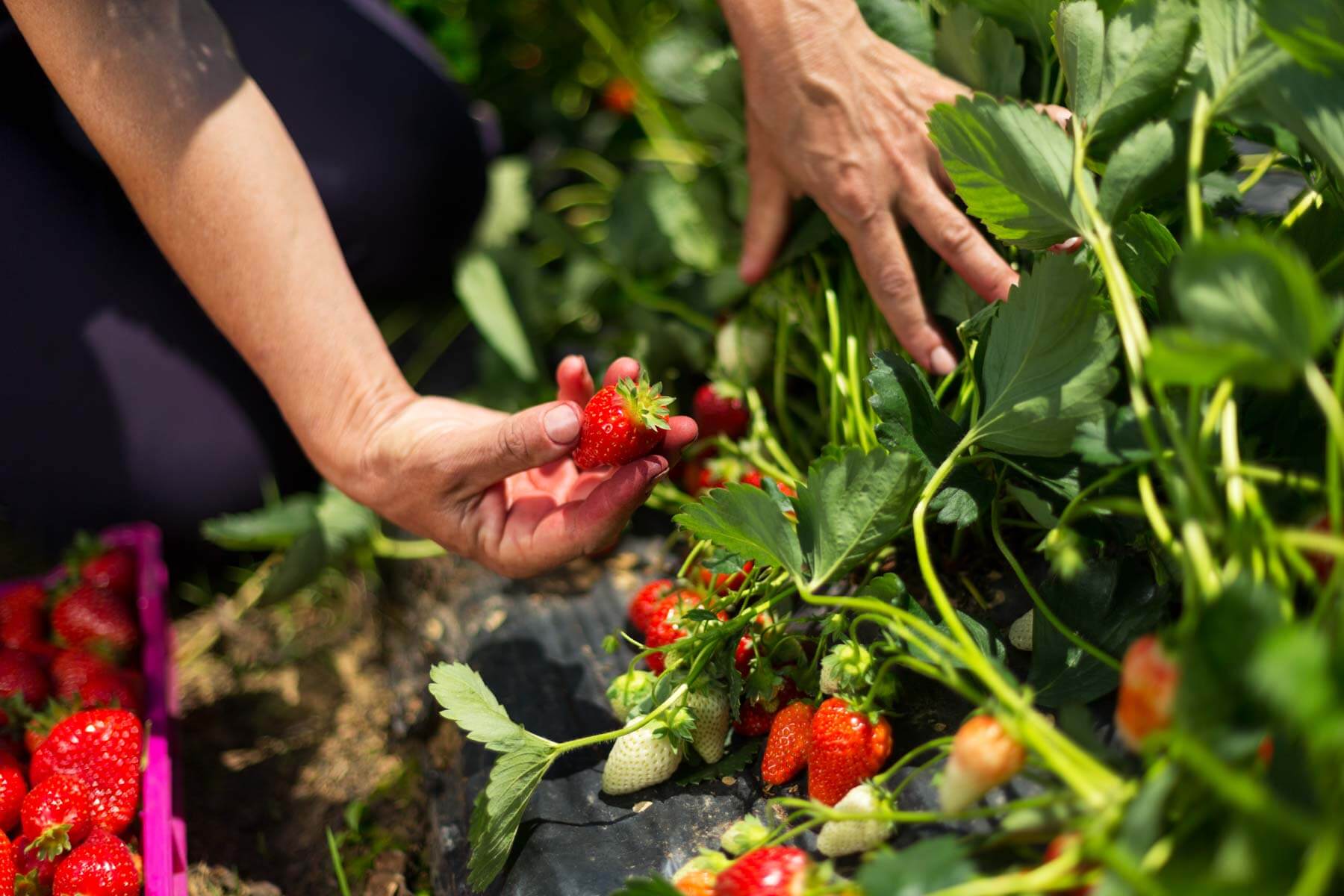Home>Gardening Tips and Tricks>Problem Solving>How To Prevent Insects From Eating Plants
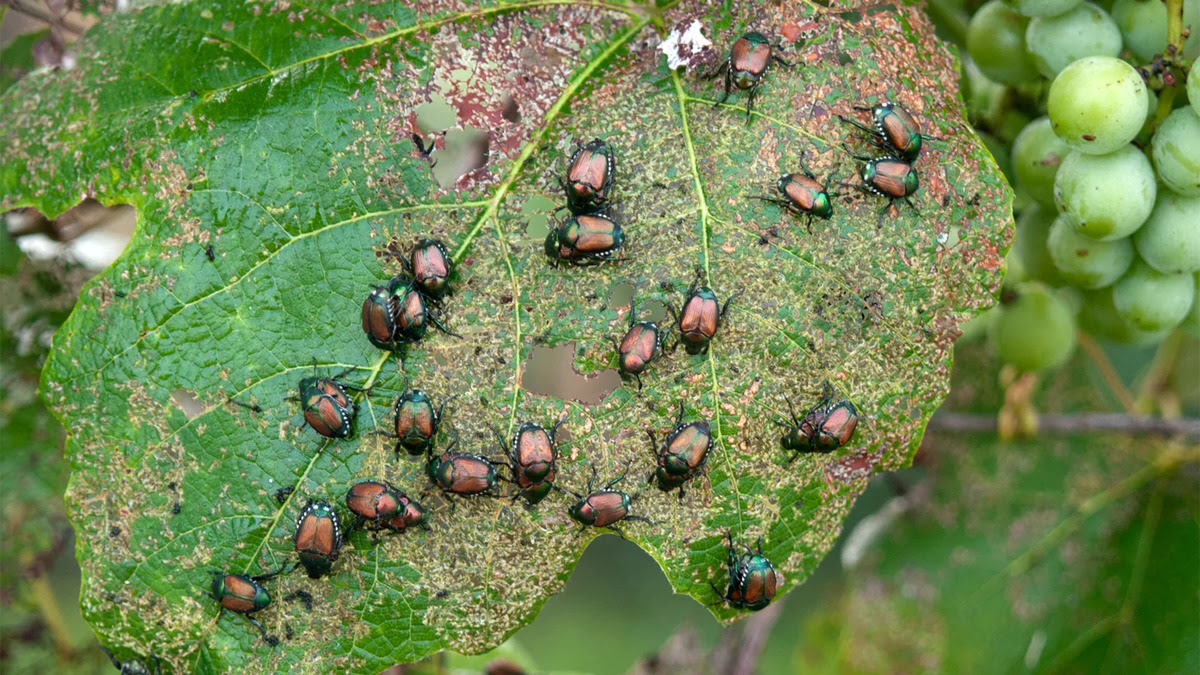

Problem Solving
How To Prevent Insects From Eating Plants
Modified: January 22, 2024
Learn effective problem-solving techniques to prevent insects from devouring your plants. Discover proven strategies and tips to safeguard your garden from insect damage.
(Many of the links in this article redirect to a specific reviewed product. Your purchase of these products through affiliate links helps to generate commission for Chicagolandgardening.com, at no extra cost. Learn more)
Table of Contents
- Introduction
- Understanding the Types of Insect Pests
- Identifying Signs of Insect Damage on Plants
- Natural Methods to Prevent Insects from Eating Plants
- Using Chemical-Free Insecticides and Repellents
- Companion Planting for Insect Control
- Physical Barriers to Protect Plants from Insects
- Proper Maintenance and Plant Care Techniques
- Conclusion
Introduction
Welcome to our guide on how to prevent insects from eating plants! If you’re a gardening enthusiast, you know how frustrating it can be to spend time and effort nurturing your plants, only to have them damaged or destroyed by pesky insects. Insects are a common problem for gardeners of all skill levels, and they can cause significant harm to your plants if not managed effectively.
In this comprehensive article, we will explore various methods to prevent insects from eating your precious plants. We will discuss natural techniques, chemical-free insecticides and repellents, companion planting, physical barriers, and proper plant care practices. By implementing these strategies, you can protect your plants and ensure a thriving garden.
Understanding the different types of insect pests is crucial in developing an effective pest management plan. Some pests chew on foliage and flowers, while others suck the sap from plants or bore into their stems and roots. The damage caused by these pests can stunt the growth of your plants, reduce yields, and even lead to plant death. By knowing the specific pests you’re dealing with, you can target your prevention methods accordingly.
Identifying the signs of insect damage is also essential for early detection and timely intervention. Look for chewed leaves, discolored or distorted foliage, holes in flowers, sticky residue on leaves, or wilting and stunted growth. These are common indications that insects are present and causing damage to your plants.
Now that we’ve covered the basics, let’s dive into the various methods you can employ to prevent insects from eating your beloved plants. Whether you prefer natural solutions, chemical-free alternatives, or a combination of both, there are options available to suit your preferences and garden needs.
Remember, prevention is key when it comes to managing insect pests. By implementing these strategies and staying diligent, you can safeguard your plants and ensure they thrive in a pest-free environment. Let’s get started!
Understanding the Types of Insect Pests
Before we delve into the methods of preventing insects from eating plants, it is important to have a good understanding of the types of insect pests that commonly plague gardens. By familiarizing yourself with these pests, you can better identify and address the specific challenges they pose.
Insect pests can be categorized into various groups based on their feeding habits and the type of damage they cause. The three main groups of insect pests are chewing insects, sucking insects, and boring insects.
Chewing insects, as the name suggests, chew on the foliage, flowers, and even fruits of plants. Examples of common chewing insects include caterpillars, beetles, grasshoppers, and snails. These pests can cause visible damage to plant tissues, resulting in holes in leaves and defoliation.
Sucking insects, on the other hand, extract sap from plants by piercing their stems or leaves. Aphids, scale insects, mealybugs, and spider mites are some examples of sucking insects. They often leave behind sticky residue, known as honeydew, and can lead to leaf discoloration, wilting, and stunted growth.
Boring insects, such as borers and weevils, tunnel into the stems, trunks, or roots of plants. Their larvae cause damage by feeding on the inner tissues, weakening the plant’s structure and inhibiting nutrient uptake. This type of infestation is particularly dangerous as it can lead to plant decline and death.
Knowing the specific pest you’re dealing with will help you implement targeted prevention and control methods. By correctly identifying the pest, you can choose the most suitable treatment options and minimize the potential damage to your plants.
There are various resources available to help you identify specific insect pests. Local garden centers, agricultural extension offices, and online resources are great places to start. These sources can provide you with information on the appearance, behavior, lifecycle, and management strategies for different pests.
By educating yourself on the types of insect pests and their characteristics, you will be better equipped to prevent them from causing harm to your plants. In the following sections, we will explore a range of preventive measures, both natural and chemical-free, to effectively safeguard your garden against these troublesome pests.
Identifying Signs of Insect Damage on Plants
Recognizing the signs of insect damage on your plants is crucial for early detection and prompt intervention. By monitoring your plants regularly, you can identify any pest infestations and take appropriate measures to mitigate the damage. Here are some common signs to look out for:
- Chewed Leaves: Chewing insects, such as caterpillars or beetles, leave behind characteristic jagged edges or holes in the leaves. If you notice these signs, carefully inspect the plant for the presence of these pests.
- Discolored or Distorted Foliage: Sucking insects, like aphids or spider mites, feed on sap, which can lead to discoloration or deformation of the leaves. Yellowing, curling, or wilting foliage may indicate an infestation.
- Holes in Flowers: Some insects, such as flower beetles or earwigs, are attracted to flowers and can cause damage by chewing holes or feeding on petals. Check your flowers regularly for signs of these pests.
- Sticky Residue: Sucking insects like aphids excrete a sticky substance called honeydew. If you notice a sticky residue on the leaves or nearby surfaces, it may indicate an aphid infestation.
- Wilting and Stunted Growth: Prolonged feeding by sucking insects or root-boring pests can restrict the flow of water and nutrients, causing wilting or stunted growth in plants. Investigate the root system of affected plants for signs of damage.
It’s important to note that some signs of damage may not be exclusive to insects. Environmental factors, diseases, or other types of pests can also cause similar symptoms. Therefore, it’s essential to closely examine the plant and its surroundings to determine the precise cause of the damage.
If you’re uncertain about the culprit, consider consulting gardening experts, local agricultural extension offices, or online resources for assistance. They can provide valuable guidance in identifying the specific insect pest and its associated damage.
Early detection of insect damage allows for timely intervention, increasing the chances of successful pest control. Once you’ve identified the type of pest infestation, you can implement the appropriate preventive measures we will discuss in the following sections. Remember, regular monitoring and vigilance are key to maintaining the health and productivity of your plants.
Natural Methods to Prevent Insects from Eating Plants
When it comes to protecting your plants from insects, natural methods can be an effective and environmentally friendly approach. These methods aim to deter pests and create a balanced ecosystem in your garden. Here are some natural techniques you can employ:
- Beneficial Insects: Encourage beneficial insects, such as ladybugs and lacewings, to establish a presence in your garden. These insects feed on many common pests and can help keep their populations in check. You can attract beneficial insects by planting native flowering plants and providing shelter.
- Neem Oil: Neem oil is a natural insecticide derived from the neem tree. It acts as a repellent, disrupts the growth and development of insects, and can be effective against a wide range of pests. Dilute neem oil according to instructions and apply it to your plants regularly.
- Garlic and Chili Pepper Spray: Create a homemade spray using minced garlic, chili peppers, and water. Strain the mixture and spray it on your plants. This strong-smelling solution can deter insects and protect your plants effectively.
- Insect-Repelling Herbs: Plant insect-repelling herbs, such as basil, rosemary, mint, and lavender, near susceptible plants. The strong aromas of these herbs can repel many common pests and reduce the likelihood of infestations.
- Compost and Organic Matter: Improve the health of your soil by adding compost and organic matter. This builds nutrient-rich soil and enhances the plant’s natural defenses. Healthy plants are more resistant to insect attacks.
- Physical Barriers: Use physical barriers, such as floating row covers or fine mesh netting, to protect your plants from insects. These barriers create a physical barrier between pests and plants while allowing air and sunshine to reach the plants.
It’s important to note that natural methods may require persistence and ongoing maintenance. Regular application and monitoring are key to their success. Additionally, it’s important to consider the specific needs of your plants and research the compatibility of certain methods with their species.
By adopting these natural methods, you can reduce reliance on chemical pesticides and create a healthier, more sustainable garden environment. In the next section, we will explore chemical-free insecticides and repellents that can provide an additional line of defense against insect pests.
Using Chemical-Free Insecticides and Repellents
If you prefer to avoid chemical pesticides in your garden, there are several effective and eco-friendly alternatives available. These chemical-free insecticides and repellents provide a safe way to deter and control insect pests. Here are some options to consider:
- Soap and Water Spray: Create a simple solution by mixing mild liquid soap with water and spraying it on your plants. This can effectively suffocate and repel soft-bodied insects such as aphids, mealybugs, and spider mites.
- Diatomaceous Earth: Diatomaceous earth is a natural powder made from fossilized algae. It works by dehydrating and damaging the exoskeleton of insects. Sprinkle a thin layer around your plants to create a barrier against crawling pests.
- Essential Oil Sprays: Certain essential oils, like peppermint, eucalyptus, and citrus oils, have insect-repelling properties. Dilute a few drops of your chosen oil in water and spray it on your plants. This can help deter pests while adding a pleasant aroma to your garden.
- Garlic and Onion Spray: Blend garlic and onion bulbs with water and strain the mixture. Dilute it further and use it as a spray on plants. The strong smell acts as a repellent and can help protect your plants from insect damage.
- Chrysanthemum Flower Extract: Chrysanthemum flowers contain natural insecticidal compounds called pyrethrins. You can create an extract by steeping dried chrysanthemum flowers in water and using it as a spray. This is effective against many common garden pests.
- Hot Pepper Spray: Infuse hot chili peppers in water and strain the mixture to create a spicy spray. This can deter insects and prevent them from feeding on your plants.
It’s important to note that while these chemical-free options are generally safe for plants and the environment, it’s still advisable to test them on a small area of your plants before applying them extensively. This can help ensure that your plants don’t have any adverse reactions.
Remember that chemical-free insecticides and repellents may require repeated applications, especially after rain or irrigation. Regular monitoring of your plants is also important to detect any new insect activity and respond accordingly.
By incorporating these chemical-free alternatives into your pest management routine, you can protect your plants while maintaining the health and integrity of your garden. In the next section, we will explore the concept of companion planting and how it can aid in insect control.
Companion Planting for Insect Control
Companion planting is an age-old gardening practice that involves growing certain plants together to benefit one another. In addition to its many other advantages, companion planting can also help control insect pests naturally. By strategically pairing plants, you can deter pests, attract beneficial insects, and create a harmonious garden ecosystem. Here are some popular companion planting combinations:
- Marigolds and Tomatoes: Marigolds emit a pungent scent that repels many common garden pests, including aphids and nematodes. Planting marigolds around tomato plants can help protect them from these pests.
- Basil and Cabbage: Planting basil near cabbage plants can help deter cabbage moths and whiteflies. The strong aroma of basil acts as a natural repellent for these pests.
- Nasturtiums and Squash: Nasturtiums attract aphids away from squash plants, acting as sacrificial plants. This means that aphids are more likely to infest the nasturtiums rather than the squash.
- Lavender and Roses: Planting lavender near roses can help repel aphids and other common rose pests. The strong fragrance of lavender masks the scent of roses, making them less appealing to pests.
- Mint and Cabbage: The strong aroma of mint acts as a deterrent for cabbage pests such as cabbage worms and cabbage loopers. Planting mint near cabbage can help protect it from these voracious pests.
- Chives and Carrots: Chives provide natural protection for carrots by repelling carrot flies. Interplanting chives and carrots can help keep these pests away from your carrot crop.
Companion planting works by either repelling pests, attracting beneficial insects that prey on pests, or improving the overall health and resilience of plants. It’s important to note that not all companion planting combinations have scientific evidence supporting their effectiveness. However, many gardeners have found success with these traditional pairings.
When implementing companion planting, consider the specific needs of each plant and ensure they are compatible in terms of sunlight, water, and soil requirements. Rotate companion plants each year to avoid pest build-up and maintain the balance in your garden ecosystem.
By incorporating companion planting techniques, you can naturally reduce pest pressures and create a more diverse and resilient garden. In the next section, we will explore the use of physical barriers as an additional method to protect your plants from insect pests.
Physical Barriers to Protect Plants from Insects
Physical barriers can be an effective method to prevent insects from reaching and damaging your plants. These barriers create a physical blockade that keeps pests at bay while allowing air and sunlight to reach the plants. Here are some popular physical barriers used in gardening:
- Floating Row Covers: Floating row covers are lightweight, permeable fabrics that are placed directly over plants. They act as a barrier, preventing insects from reaching the plants while still allowing sunlight, air, and water to pass through. Row covers are particularly useful for protecting plants from flying insects like aphids, beetles, and leaf miners.
- Mesh Netting: Mesh netting with a fine weave can effectively keep insects, birds, and larger pests away from your plants. This barrier creates a physical obstruction, making it difficult for pests to access your crops.
- Plant Collars: Plant collars are protective rings placed around the base of young plants to prevent crawling insects, such as cutworms, from accessing and damaging the stems. These collars can be made from cardboard, plastic cups, or even aluminum foil.
- Copper Tape: Copper tape acts as a physical barrier against slugs, snails, and other crawling pests. The tape is applied around pots or raised beds, and the pests are deterred by the electrical charge created when they come into contact with the copper.
- Fencing: Erecting a physical fence around your garden can help keep larger pests, such as rabbits and deer, away from your plants. Choose a fence height and design that suits the specific pest challenges in your area.
When using physical barriers, it’s important to ensure that they are properly installed and maintained. Secure the barriers firmly to prevent pests from finding gaps or access points. Regularly inspect the barriers for any damage or wear and repair or replace them as needed.
It’s worth noting that while physical barriers can be highly effective, they also limit the access of beneficial insects to your plants. Therefore, it’s important to strike a balance by allowing for periods of open access and using barriers only when necessary.
By implementing physical barriers, you can create a literal barrier between your plants and insect pests. These barriers provide an additional layer of protection for your plants, helping to safeguard them from potential damage.
In the next section, we will explore proper maintenance and plant care techniques, which play a critical role in preventing insect infestations and promoting overall plant health.
Proper Maintenance and Plant Care Techniques
Proper maintenance and plant care techniques are essential for preventing insect infestations and promoting the overall health of your plants. By implementing these practices, you can create an environment that is less hospitable to pests and more conducive to plant growth. Here are some key maintenance and care techniques to incorporate into your gardening routine:
- Regular Inspection: Routinely inspect your plants for any signs of pest activity or damage. By catching infestations early on, you can take prompt measures to control the pests and minimize their impact.
- Weed Management: Keep your garden free of weeds, as they can harbor insects and provide a breeding ground for pests. Regularly remove weeds to eliminate potential hiding spots for pests.
- Pruning and Trimming: Prune and trim your plants regularly to maintain their shape and promote airflow. Properly spaced and pruned plants are less prone to insect infestations as pests struggle to navigate through well-spaced foliage.
- Sanitation: Practice good garden sanitation by removing fallen leaves, fruits, and plant debris. Pests often hide in decaying material, so cleaning up the garden regularly eliminates potential habitats for pests.
- Water Management: Avoid overwatering your plants, as excessive moisture can attract pests and create favorable conditions for fungal diseases. Water your plants at their root level in the morning to allow adequate time for drying during the day.
- Fertilization: Providing the right nutrients to your plants through proper fertilization strengthens their immune system and makes them more resistant to pest attacks. Use organic fertilizers or compost to promote healthy plant growth.
- Crop Rotation: Practice crop rotation by changing the location of your plants each season. This helps reduce the buildup of pests specific to certain plant families and prevents infestations from recurring year after year.
- Encourage Biodiversity: Promote biodiversity in your garden by incorporating a variety of plant species. This attracts beneficial insects that prey on pests and creates a balanced ecosystem that is more resilient to infestations.
By following these maintenance and plant care techniques, you can create a healthy and thriving garden that is less vulnerable to insect pests. Remember to be observant and responsive to any signs of distress or pest activity in your plants. With proper care and attention, you can enjoy a bountiful harvest and beautiful, pest-free garden.
Conclusion
Insects can pose a significant threat to the health and vitality of your plants. However, with the right knowledge and techniques, you can prevent insect damage and create a thriving garden. Throughout this comprehensive guide, we have explored various methods for protecting your plants from insects.
Understanding the types of insect pests and identifying the signs of damage are essential for effective pest management. By knowing your enemy, you can implement targeted prevention methods and respond promptly when necessary.
We have discussed natural methods, such as attracting beneficial insects, using natural insecticides and repellents, practicing companion planting, and utilizing physical barriers. These methods offer environmentally friendly alternatives to chemical pesticides while promoting a balanced garden ecosystem.
Additionally, proper maintenance and plant care techniques play a critical role in preventing insect infestations. Regular inspection, weed management, pruning, sanitation, and other practices help create an environment that is less conducive to pests and more beneficial to plant growth.
Remember to tailor your pest prevention strategies to your specific garden and plant needs. Every garden is unique, so experiment with different methods and find what works best for you.
By incorporating these techniques, you can protect your plants from pesky insects and create a healthy, thriving garden. Enjoy the beauty and abundance of a pest-free landscape, and reap the rewards of your hard work and dedication.
Happy gardening!
